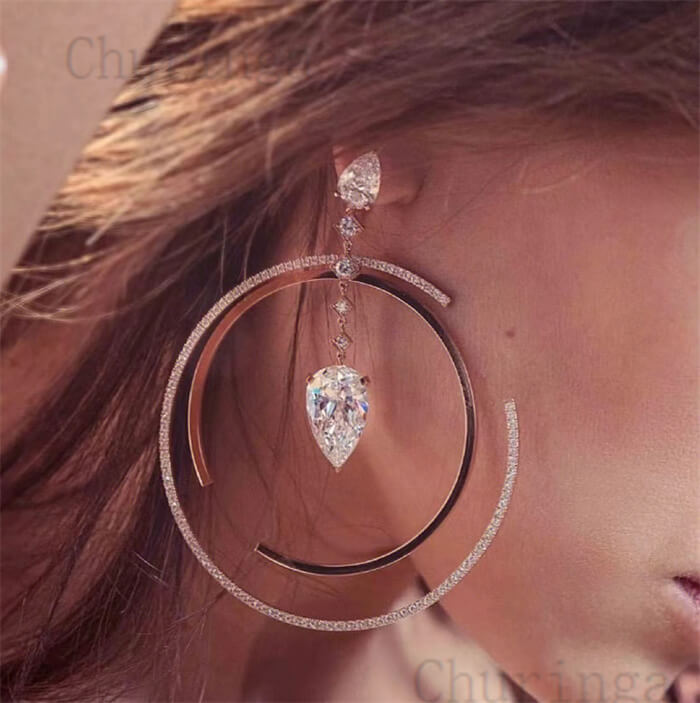There are two elements of any diamond ring that influence its aesthetic the most. The first element is the cut of the diamond and the other is the setting of the ring. As regards the former, it is an aspect that most women have established a viewpoint about long before they hear the words “will you marry me?” Meanwhile, diamond ring settings might be a decision you haven’t quite made yet.
The impact of diamond ring settings can totally change the style and look of the piece. With the various diamond settings, the ring can be any of the modern, sporty, traditional, or vintage look. By simply altering something as basic as the setting, a lot can change about your diamond ring.
Therefore, it’s crucial to have an understanding of diamond ring settings. That way, you can clearly decipher what best satisfies your personal preferences.
In addition, there’s a lot more to a diamond ring than meets the eye. A mere glance will probably reveal the center stone before any other element. Plus, while that’s practically and constantly the focal point, the setting is just as significant. The setting does not only protect the ring, it literally influences its look and aesthetic.
Moreover, diamond ring settings aren’t one size fits all, either. For a fact, selecting a unique diamond ring setting style is one of the best means to make your sparkler resonate “YOU!”
Now, what’s the distinction between solitaires and halos? Why do we even call them pavé? Below is the proper justification provided by industry experts on all you need to know about diamond ring settings. This will guide you through choosing the best one for your sparkler.
Understanding Diamond Ring Settings
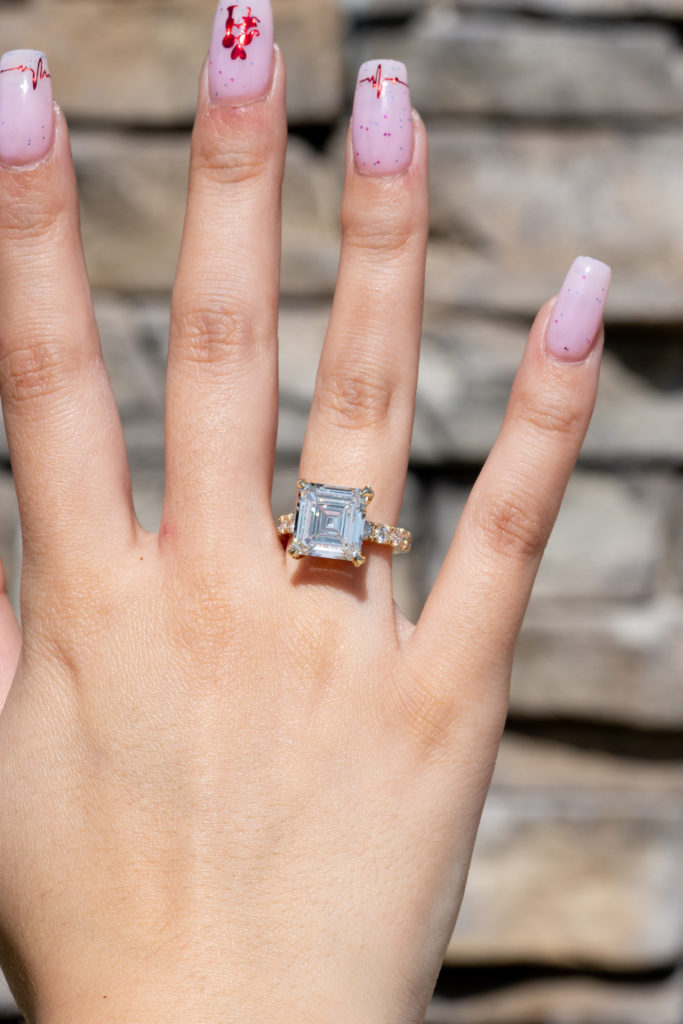
Before we give you a breakdown of the many types of diamond ring settings, it’s worthwhile to understand exactly what a setting is. Just like the diamond shape and metal type, the setting is a critical element of a diamond ring.
According to Nadine Tacorian Arzerounian, COO and design director of TACORI, “An engagement ring setting refers to the way a diamond is secured onto a metal band. The setting is important in both form and function. It protects and holds your center diamond, but also contributes to the look and feel of your engagement ring.”
For every single diamond ring, there is a specific setting. However, the style you choose will directly influence what it appears like on your finger. Still, what matters most is that your setting reflects a design to ensure your center stone stays protected.
Claw or Prong vs. Rubover or Bezel
There might be evidently endless choices for diamond settings. Yet, it’s most beneficial to think of them in two major categories. The first is the claw or prong and the other is the rubover (or bezel. We draw from the words of Michelle Oh with Brides to explain these two categories better.
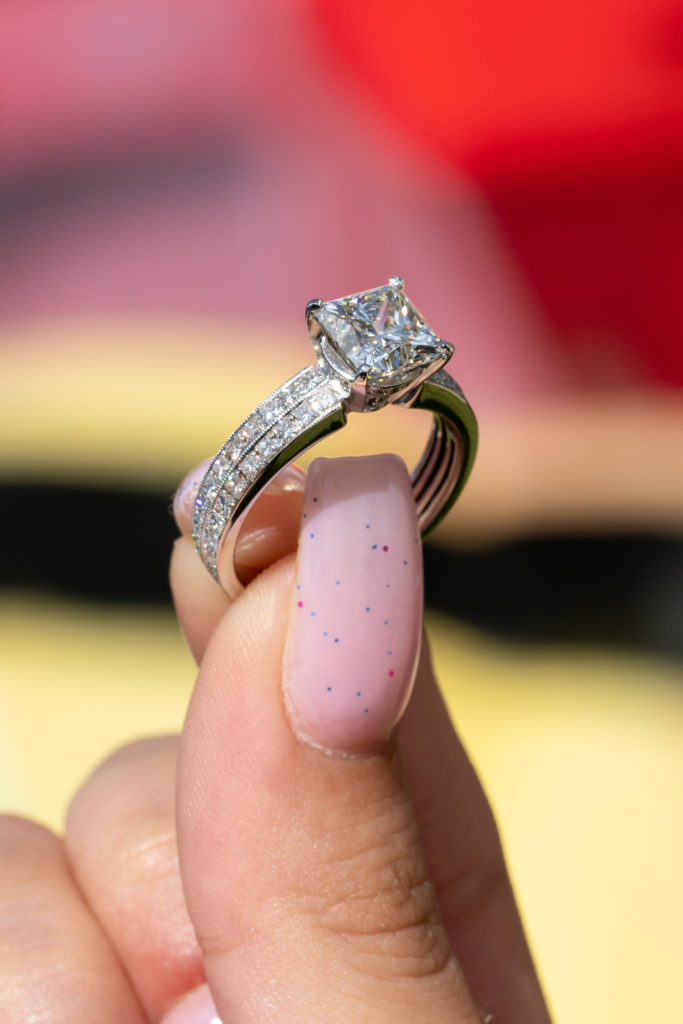
Michelle Oh is a jewelry designer who trained at Central Saint Martins College of Art and Design in London. Establishing her eponymous line in 2011, she now specializes in unique alternative engagement and wedding rings.
She asserts, “Most settings are variations of these two basic types.”
-
The Claw or Prong
Oh explains the Claw setting in her own words saying, “As the name suggests, claw-set stones are held in place by little claws. The number of claws [usually four or six] can vary to produce different looks. Within the claw style, you can also have variation in how the claws are shaped and finished.”
Various prominent claw diamond settings include rounded claws with each claw seeming more like beads or grains holding the stone. Also, there are talon claws which are longer sharper pointed claws. More so, there is the single-stone claw which is arguably the most classic and established ring setting.
One major reason why most diamond ring lovers opt for a claw setting is that it emphasizes the center stone more prominently. That way, it allows more light to interact with the diamond leading to more sparkle.
The claw setting is an incredible choice for those who want something that feels adaptable and distinctive. This setting also blends well with numerous diamond cuts. One disadvantage of going with a prong setting is the absence of protection. Due to the stone being encircled by less metal, the chance to chip it on a sharp surface is higher.
-
The Rub Over or Bezel
For rubover or bezel settings, Oh explains that “the stone’s perimeter is surrounded by a wall of the metal casing. These types of settings are more hard-wearing and usually provide greater protection for the stone.”
She shares that the rubover or bezel ring setting style has not been as prominent due to its “chunkier” look. However, in certain shapes and depending on the style of design, this can actually blend flawlessly with the stone better than a claw setting.
Beyond protecting your stone better, a bezel setting can also conceal flaws better. They are great for hiding flaws such as inclusions in the diamond or a chip in the stone. What we don’t quite like about this ring setting is that it can make your diamond look smaller than it really is and less sparkly. However, by setting it higher on the band, you can effectively correct the problem.
Meanwhile, for those considering mixing it up with your diamond ring settings, you could consider blending a claw and bezel for an unusual yet elegant result. Oh explains it better, “for example, for this ring, the three-round stones to the middle are set in claws, and the last 2 stones on the ends are set in rub over style.”
Diamond Settings: A World of Many Options
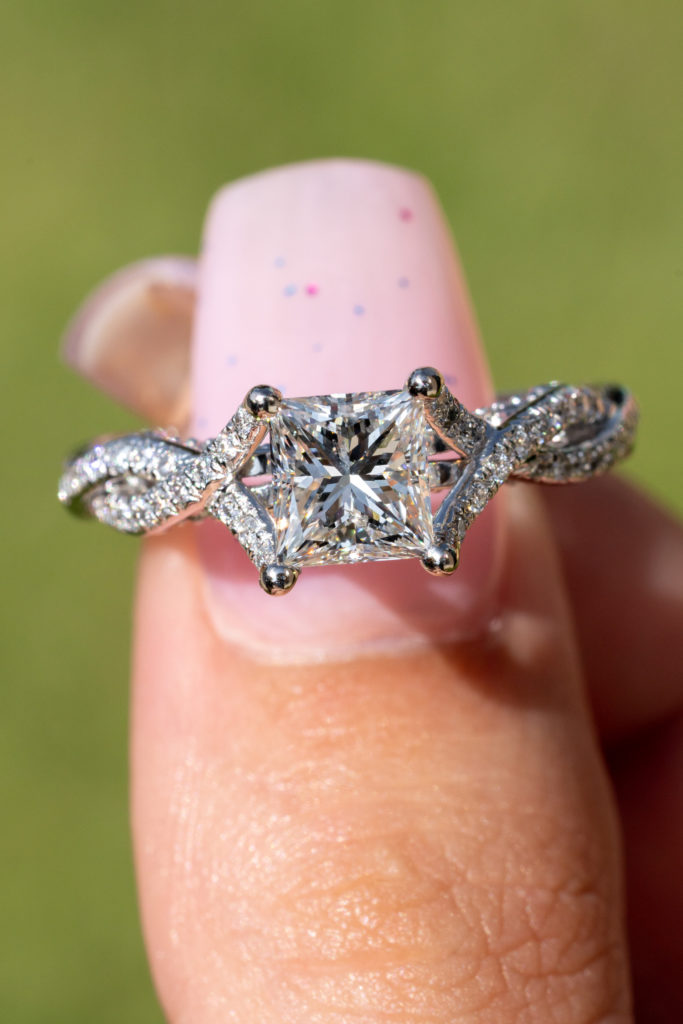
Now that you successfully nailed down the prevailing aesthetics of prong vs. bezel, it’s time to dive into the world of diamond settings. Even as we tried to classify them all under two labels, they still don’t always fall neatly under one label or the other.
Below is a breakdown of what the different options are, what they look like, and why they might be your perfect ring setting choice.
-
Solitaire Ring Setting
Possibly the most prominent of them all, this prong diamond ring setting makes your center stone the star of the show. This setting is timeless and distinctive. The solitaire setting will always be a smart choice for those who prefer to keep it modest.
Particularly, there is a six-prong solitaire setting, well-known for its namesake associations and concentration on the center stone. This concentration on the center stone produces a “floating” effect.
-
Cathedral Ring Setting
The cathedral ring setting is almost like the solitaire. The addition to it is that, besides the prongs, it comprises arches of metal. Together, they all hold up your stone firmly in place always. Its aesthetic is majestic and sophisticated. This ring set will always be a great choice for a bride who wants something traditional and gorgeous.
-
Channel Ring Setting
The Channel ring setting features diamonds set in a row sandwiched between the two metal ends of the band. Here is a more secure alternative for your diamonds while they still appear delicate and with all the sparkles.
-
Split-Shank Ring Setting
With negative space alongside the side of the diamond, this setting makes room for a delicately distinct silhouette that still gives off that classic feel. More so, it gives more support to your center diamond.
-
Bar Ring Setting
Just like the channel setting, the bar comprises a diamond-encrusted band but with metal bars placed between each diamond piece. This setting is a less famous option. However, when done well, they can be purely fascinating.
-
Bezel Ring Setting
We mentioned earlier that the bezel setting is when the stone’s perimeter comes enveloped by a wall of the metal casing. What this often leads to is a vintage aesthetic that’s suitable for the bride who wishes for something unusual or romantic.
-
Pave Ring Setting
For those that are all about the sparkle, pave should be on your list of settings to try. This setting is similar to a solitaire but headlines a band that’s encrusted with small diamonds. The diamonds might either be all the way around or halfway down the band depending on your taste.
-
Cluster Ring Setting
Here is another smart choice for the lover of all things that shines in the light. With a cluster setting, you have a medley of several stones that can appear like various silhouettes.
-
Halo Ring Setting
Here is a setting that features small stones that surround the center stone for a result that’s beautiful and adds more sparkle. This setting can also make your diamond look bigger than it is. That might be a welcomed side effect if you want it.
-
Tension Ring Setting
With this sleek setting comes the illusion that the stone is floating amidst the band. This setting clearly resonates with an artful, modern aura that’s great if you’re looking for a setting that stands out.
-
East-West Ring Setting
East-west set diamond rings are when the stones come positioned horizontally on the band. This setting is an uncommon twist that will still give your ring a classic and timeless aura.
Selecting The Perfect Diamond Ring Setting
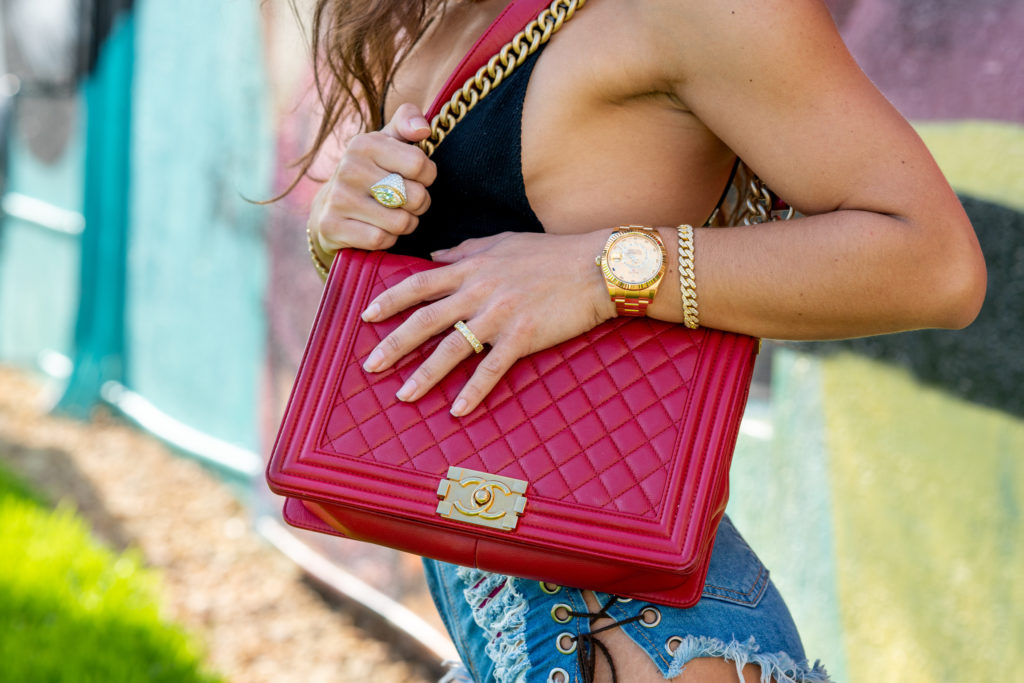
Selecting the “correct” diamond ring setting relies on your center stone, as well as your personal preference. Truly, it’s prevalent for most traditional diamond ring settings to have at least four prongs holding the stone in place. Yet, you might consider going for more if the diamond is larger or has a fancy cut shape. Other settings like a bezel or a halo can provide additional security as well.
Also, your daily habits play a role in your choice of the perfect diamond ring setting. For someone who leads an active lifestyle or frequently works with your hands, a high-set diamond can make your stone open to chipping. They might even fall out. But, a lower setting can also be safer for rings that feature bigger diamonds.
Meanwhile, you don’t have to make this decision on your own. A competent and experienced gemologist or jeweler like us can help you select a setting that’s perfect for your needs. More so, for a more personalized feel, you can even opt for a setting that’s entirely custom-made for you.
Jeweler Heidi Gibson explains, “commissioning a design that’s fashioned to order has many benefits Most large box stores have cataloged, ready-made settings that are merely resized with a center stone added. When ordering a custom setting, plenty of elements can be adjusted for your personal preferences, from the design to the metal choice and center stones options, as well as your finger size. Plus, knowing that your ring was made specifically to order for your finger is very special.”
The Best Ring Setting for your Diamonds
Do you prefer a look that’s huge and fierce? There are engagement ring settings that can make a diamond appear bigger. We understand that going up in carat sizes may result in a costlier price tag. So, you can rather opt for a smaller center stone.
In addition, select a strategic setting that’ll make it look larger than it really is. If you wish to enhance the center stone, consider any type of halo setting with smaller stones encircling the diamond. That way, you will make it look bigger to the naked eye. More so, a cluster setting or a style with many side stones (like a three-stone ring, à la Meghan Markle) will occupy more surface area on the hand. Hence, it makes the ring appear larger.
Finally, some diamond ring settings offer your ring extra sparkle as well. For those that prefer their rings to appear extra shiny, try a pavé band or a solitaire stone with a hidden halo. By adding other smaller diamonds, you will adorn your ring with light coming in from all angles. It is a perfect way to awaken the illusion of a brighter ring.
Conclusion
It all begins with you properly understanding diamond ring settings and how significant they are to the eventual look of your rings. From that point, it becomes easy to make a choice that both secures your diamond and brings out all the sparkles.
Ten articles before and after
Buying Vintage Diamonds – Diamonds By Raymond Lee
Richard Mille RM 005 with Diamonds – Diamonds By Raymond Lee
Audemars Piguet Royal Oak At 50 – Diamonds By Raymond Lee
Three-Stone Diamond Ring with Eternity Band – Diamonds By Raymond Lee
Hate to Love Stories of Rolex Watches – Diamonds By Raymond Lee
Audemars Piguet Royal Oak All Diamonds – Diamonds By Raymond Lee
The Hottest Engagement Rings of 2022 – Diamonds By Raymond Lee
Asscher Cut Diamond Engagement Ring – Diamonds By Raymond Lee
